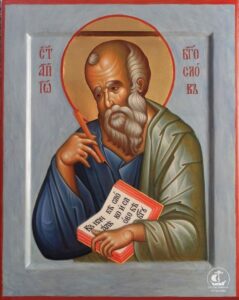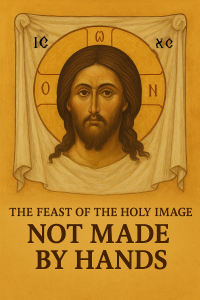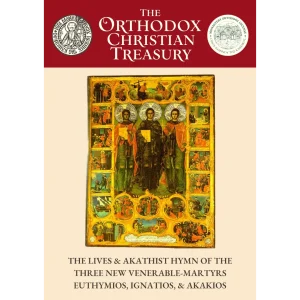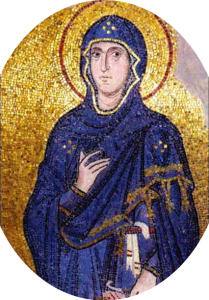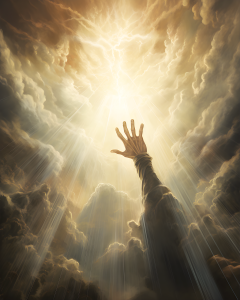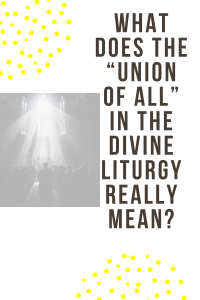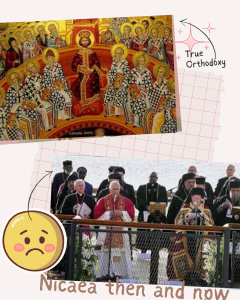THE SACRIFICE FOR SIN
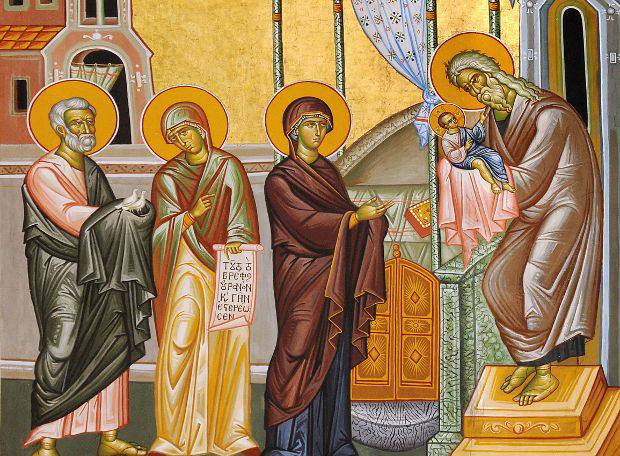
by Dr. Vladimir Moss
In the shadow and the letter of the Law, let us, the faithful, discern a figure: every male child that opens the womb shall be sanctified to God. Therefore do we magnify the firstborn Word and Son of the Father without beginning, the firstborn Child of a Mother who had not known man.
Feast of the Meeting of the Lord, Mattins, Canticle Nine, Irmos.
There is no forgiveness without the shedding of blood.
Hebrews 9.22.
Introduction
The feast of the Meeting of the Lord is one of the most mysterious in the Church calendar. Christ is brought into the Temple by His Mother and Joseph in order to be offered to the Lord in accordance with the word of the Lord to Moses: “Sanctify to Me all the firstborn, whosoever openeth the womb among the children of Israel, both of man and of beast: it is Mine” (Exodus 13.2). Also, the Mother brought an offering for herself, for her purification. The Law said that this offering should be “a lamb of the first year for a burnt offering, and a young pigeon, or a turtledove, for a sin offering”; but “if she is not able to bring a lamb, then she shall bring two turtle doves, or two young pigeons” (Leviticus 13.6-8). Since Joseph and Mary were poor – or, perhaps, because they had given away most of their money to the poor – she did not offer a lamb, but two turtle doves.
At first sight, it is difficult to see why this event should be celebrated each year as one of the twelve major feasts of the Church. The Lord’s Conception from the Virgin at the Annunciation; His Nativity in Bethlehem; the Revelation of the Holy Trinity and the sanctification of the waters at His Baptism; and, of course, His Death and Resurrection: these are all events that are clearly of the greatest significance, without which our salvation would be unthinkable. But in what lies the exceptional significance of the Meeting of the Lord in the Temple?
At the root of the feast’s significance lies the concept of the sacrifice for sin. The importance of this concept cannot be exaggerated: if one had to point to one common denominator of all religions, besides the existence of God, it would surely be: the blood-sacrifice for sin. We find such sacrifices in the true religion and in all the false, pagan ones, in the New Testament and in the Old. Let us examine its meaning.
The Old Testament Sacrifices
In the Old Testament we find blood-sacrifices for sin carried out by the people of God even before the Law. Abel offered the first blood-sacrifice to the Lord. It was accepted, while Cain’s vegetarian sacrifice was rejected… Noah offered sacrifices immediately after being delivered from the Flood; and it was after the Lord had smelled its “smell of sweetness” that He vowed that He would not curse the earth again (Genesis 8.21). The Patriarchs offered sacrifices to the Lord. Abraham even offered His only son Isaac; it was his readiness to do this that caused God to bless him and his descendants with that extraordinary blessing that contained in itself the promise of the Redeemer.
The Law of Moses institutionalized the offering of sacrifices on a vast scale, with very detailed instructions on how, when and where to offer them. Protopriest-Professor T.I. Butkevich writes: “The Jews unfailingly carried out two daily blood-sacrifices: in the morning and in the evening (Exodus 29.38; Numbers 28.3, 4), besides sacrifices from individual people. There were cases when a very large quantity of blood sacrifices were offered on one day. Thus on the day of his anointing to the kingdom Solomon offered to the Lord in Gabaon 1000 whole-burnt offerings (III Kings 3.4); on the day of the sanctification of the Jerusalem temple he offered 22,000 bullocks and 120,000 sheep in sacrifice to God (III Kings 8.63; compare Chronicles 7.5). In general, Solomon unfailingly offered a multitude of sacrifices three times a year: at the feast of the unleavened bread, at the feast of weeks, and at the feast of tabernacles, besides the sacrifices required by the decree of the law for every day, and also on the Sabbaths and new moons. However, abundant sacrifices were also offered by other pious kings, for example, David (II Kings 6.13), Joasaph (II Chronicles 17.4), Joash, Ozias and Hezekiah (II Chronicles 29.32, 33). On returning from the Babylonian captivity, the Jews, celebrating the consecration of the half-built temple in Jerusalem, in spite of all their poverty, offered in sacrifice to God one hundred bullocks, two hundred asses, four hundred lambs and twelve goats for the sins of the whole of Israel in accordance with the number of the twelve tribes of Israel (II Ezdra 7.7, 8). Even Herod, according to the witness of Josephus Flavius, on the day of the triumphant consecration of the temple in Jerusalem restored by him offered in sacrifice to God three hundred bullocks, while the number of animals then offered in sacrifice by individual people, says Flavius, cannot be calculated because of the unusually great number of slaughtered animals. There is an indication that sometimes on the feast of Pascha up to 260,000 lambs were slaughtered in Jerusalem.”
In view of this evidence, it is impossible to deny the centrality of blood-sacrifices in the worship of the Old Testament Church.
But this immediately raises the question: why? After all, did not the Lord say through the Prophet-King David: “Shall I eat of the flesh of bulls? Or the blood of goats, shall I drink it? Sacrifice unto God a sacrifice of praise, and pay unto the Most High thy vows” (Psalm 49. 14-15)? And again: “If Thou hadst desired sacrifice, I had given it; with whole-burnt offerings Thou shalt not be pleased. A sacrifice unto God is a broken spirit; a heart that is broken and humbled God will not despise” (Psalm 50.16-17). In other words, the blood of innocent victims is not what God wanted from the Jews and wants from us. What he wants is “the sacrifice of praise” and “a heart that is broken and humbled”.
There are three possible ways of resolving the apparent contradiction between God’s institution of animal-sacrifices in the Old Testament, and His clear indication that in themselves these sacrifices are not pleasing to Him.
The first is that animal sacrifices were introduced by God in order precisely to elicit in the Jews the feeling of compunction, of sorrow for sin, that is the only real sacrifice we can offer to God. If, when one sins, one has to sacrifice the best lamb in one’s flock, one soon comes to realize the cost of sin – the cost to oneself, but also the cost to others. Nor should this be difficult to understand even for contemporary Americans or Europeans: if we had to sacrifice our favourite pet dog or cat every time we sinned, we would undoubtedly begin to curb our sinful impulses! Thus animal-sacrifices elicit compassion or pity – pity for the animal, pity for oneself at being deprived of it, – and compassion elicits compunction. It was precisely the method of eliciting King David’s compassion that the Prophet Nathan used in order to elicit his compunction, his sorrow for the double sin of sleeping with Bathsheba and killing her husband Uriah: “There were two men in one city, one rich and the other poor. And the rich man had very many flocks and herds. But the poor man had only one little ewe lamb, which he had purchased, and preserved, and reared; and it grew up with himself and his children in common; it ate of his bread and drank of his cup, and slept in his bosom. And a traveller came to the rich man, and he spared to take of his own flocks and of his herds, to dress for the traveller that came to him; and he took the poor man’s lamb, and dressed it for the man that came to him. And David was greatly moved with anger against the man. And David said to Nathan, As the Lord lives, the man that did this thing shall surely die. And he shall restore the lamb seven-fold, because he has not spared. And Nathan said to David: Thou art the man that hath done this…” (II Kings 12.1-7).
Since we have sinned, we “shall surely die” – that was the sentence of God on Adam and Eve. But rarely do we feel the full horror of sin, its full consequences. So God causes another, innocent victim to die in our place in order to elicit our shame, our horror, our pity and our compunction…
A second reason why God may have introduced animal sacrifices was to divert the Jews from the pagan custom of sacrificing, not only animals, but even human beings, to their false gods. David speaks of the sacrifices of children that the Jews made to Baal-phegor during the exodus from Egypt and in Canaan (Psalm 105.28, 35-36). And in Judges 11 we read the tragic story of how Jephtha sacrificed his daughter in fulfilment of a vow made to God – but inspired by the devil, according to St. John Chrysostom. The Law and the Prophets are full of admonitions to the Jews not to sacrifice their sons and daughters to Baal or Moloch: “Do not give your children to the service of Moloch, and do not dishonour the name of your God. I am the Lord… And the Lord said to Moses: tell the sons of Israel: whoever of the sons of Israel or of the proselytes who live among the Israelites shall give of his children to Moloch, let him be put to death” (Leviticus 18.21, 20.1). The Prophet Micah sums up the sinfulness of all such sacrifices, saying: “How shall I reach the Lord, and lay hold of my God most high? Shall I reach Him by whole-burnt-offerings, by calves of a year old? Will the Lord accept thousands of rams, or ten thousands of fat goats? Should I give my first-born for the sin of my soul? Has it not been told you, O man, what is good? Or what does the Lord require of you except to do justice, and love mercy, and be ready to walk with the Lord your God?” (Micah 6.6-8). And again the Lord says through Ezekiel: “You took of your sons and daughters, whom you bore, and sacrificed them to be destroyed. You went a-whoring as if it were a little thing, and slew your children, and gave them up in expiatory offerings. This is beyond all your fornication…” (Ezekiel 16.20-22). Since these sacrifices were offered to demons – for “all the gods of the pagans are demons” (Psalm 95.5) – they counted as worse sins than all their previous spiritual fornication: they were apostasy from the Lord God of Israel.
But by allowing the Jews to sacrifice, not children, but animals, and not on the altars of the demons, but in the temple at Jerusalem, God weaned them from this vice. St. John Chrysostom, commenting on Isaiah 1.2, writes that the Lord instituted animal sacrifices “out of condescension to our weakness. God acted exactly like a doctor, who, seeing that a person sick with a fever is self-willed and impatient, and wants to drink a lot of cold water, and threatens that if they do not give it him he will put a halter around his neck, or cast himself over a precipice, in order to avert the greater evil, allows the lesser, only so as to divert the sick man from a violent death… [However,] having allowed them to offer sacrifices, He allowed them to do this in no other place than Jerusalem. Then, when they had offered sacrifices for some time, He destroyed this city so as… to distract them, albeit against their will, from this matter. If He had said: stop it, they would not easily have agreed to abandon their passion for sacrifices. But now, from the sheer necessity of their being (outside Jerusalem), He drew them away from this passion…”
Nevertheless, at the root of this horrific sin of child-sacrifice lay a true thought, albeit one perverted by diabolical cunning. For, as Butkevich writes, “the belief that only the death of the most innocent human being is a true sacrifice reconciling man with God runs like a red thread through all the pages of the Old Testament Divine Revelation. Only the blood of a perfect righteous man, according to the teaching of the Word of God, could wash away the impurity of Adam’s fall into sin from man. Paganism wrapped this idea in the crude form of offering infants at the breast, who had as yet no personal sins, in sacrifice to God. Paganism found nobody on earth more innocent, pure and sinless than infants at the breast. This crude form was rejected by the boundless compassion of God, but the idea itself, as the sentence of eternal and absolute Justice, was retained. It lies already at the base of the Old Testament law on the consecration to God of all the first-born. This law was given by God even before the exodus of the Jews from Egypt. ‘And the Lord said to Moses: sanctify to Me every first-born that opens the womb from among the sons of Israel’ (Exodus 13.1, 2). And this law was repeated more than once: compare Exodus 22.29, Numbers 3.13 and 8.17. But what does to sanctify somebody to God mean? First of all (according to the explanation of Moses himself), it means to slaughter the one who is sanctified and offer him in sacrifice; and then already in a figurative sense ‘to give him to the Lord for all the days of his life to serve the Lord’ (I Kings 1.28). God Himself announced through Moses to the Jewish people: ‘Every dedicated thing which a man shall dedicate to the Lord of all that he has, whether man or beast, or of the field of his possession, he shall not sell it, nor redeem it: every devoted thing shall be most holy to the Lord. And whatever shall be dedicated of men, shall not be ransomed, but shall surely be put to death.” (Leviticus 27.28, 29).”
And yet there was an exception to the rule that that which was dedicated to the Lord could not be ransomed. As Butkevich writes: “Immediately after declaring the law on the dedication of the first-born, the Lord commands the Jewish people through Moses not to offer their first-born in sacrifice, but to ransom them. This is what Moses told his people on this score: ‘Redeem every first-born of man. And when your son will ask you, saying, What is this?, then you will say to him: with a strong hand the Lord brought us out of Egypt, out of the house of slavery. For when Pharaoh was stubborn and would not let us go, the Lord killed all the first-born in the land of Egypt, from the first-born of man to the first-born of beast. Therefore do I sacrifice to the Lord everything that opens the womb of the male sex, and every firstborn from my sons I redeem’ (Exodus 13.13-15). The Lord repeated His command through Moses a little later: ‘Redeem all the first-born of your sons’ (Exodus 34.20). At first the Jewish first-born to a significant extent were substituted by the Levites, who were separated exclusively for the service of God (cf. Numbers 3.45). Then they were ransomed with money: five shekels per person. But above all, and exclusively later on, [they were ransomed] by sacrificial animals. Prosperous and rich people had to offer for their son a one-year lamb for a whole-burnt-offering and a young dove or pigeon as a sin offering; while poor people who did not have enough to acquire a lamb had to offer two pigeons or two young doves, one for a whole-burnt-offering and the other for a sin offering (cf. Leviticus 12.6-8). In this way we already see clearly here that the Old Testament Jewish blood sacrifices took the place of the sacrifice of people themselves…”
The Sacrifice of the First-Born
However, there is more to be said about the sacrifice of the first-born, which will reveal to us both why it occupies such a pivotal place in the whole system of sacrificial worship, and why – the third and most fundamental reason why – God introduced animal-sacrifices in the Old Testament.
Let us recall the Exodus story that gave rise to it. God called the Jews to make a journey of three days into the wilderness in order to offer sacrifices to Himself (Exodus 4.18). Since Pharaoh refused to allow them to go, he and his people were subjected to the ten plagues of Egypt, the last and most terrible of which was the destruction of all the first-born of Egypt. However, since the Jews, in accordance with God’s instructions, sacrificed a lamb and smeared his blood on the lintel and door-posts of their houses, they were spared this destruction, and the Angel of death passed over them. This lamb, the paschal lamb, as we learn from the Scriptures of the New Testament, is a shadow and a type of the Lamb of God, the Lord Jesus Christ, the Blood of Whose Sacrifice on the Cross redeems us from sin and death, allowing us to pass over from death to life. “For Christ our Passover is sacrificed for us” (I Corinthians 5.7).
And so the primary purpose of this first animal sacrifice was not to elicit sorrow for sin among the Jews, nor to distract them from idol-worship, but rather to save them from slavery and death. In the Old Testament story, the blood of the lamb saved them from slavery to Pharaoh and physical death. In its New Testament fulfillment in Christ, the Blood of the Lamb saves all believers from slavery to Satan and spiritual death.
So fundamental is the Exodus story and its inner meaning to the true worship of God that the Lord not only commanded its celebration and re-enactment at the most important feast of the Jewish year, Pascha, but also instituted the dedication the first-born sons of the Jews to the Lord through the Temple priesthood.
This had two purposes. The first was to remind the Jews of how, through the mercy of God, their first-born had been spared the fate of the first-born of Egypt. The second, and more important, was to hint at the real identity of the Lamb Who had delivered them, and at the context in which He would be revealed to Israel… As the Church sings of St. Symeon, the God-receiver: “O blessed priest, thou didst offer up the sacrifices of the law, the lambs, for ineffable mercy, showing forth beforehand the Blood of the Saviour…”
This is where the Gospel account of the Meeting of the Lord in the Temple becomes so important. Christ is offered as the first-born of His Mother and supposed father. But He is not one first-born among many. He is the only first-born who literally fulfills the commandment of the Law. For, as Blessed Theophylact writes, “The law said, Every male that openeth the womb shall be called holy to the Lord. Only with Christ did this literally occur. He Himself opened the womb of the Virgin at His birth, while all other wombs which have borne a child have been first opened by a man…”
Moreover, Christ alone, of all the first-born of Israel, could not ransomed, being Himself the Ransom. For while the first-born of Israel escaped death in Egypt through the blood of the paschal lamb, and all the following generations of first-born also escaped immolation by being ransomed through the offering of the animals or the five shekels, the one and only First-Born of God the Father and Mary the Virgin did not, and could not, escape death. For of Him alone it was said in the Law that He “shall not be ransomed, but shall surely be put to death.” (Leviticus 27.28, 29). For the paschal lamb slaughtered in Egypt, and the lamb offered by the rich in the place of their first-born are, typologically speaking,Christ the First-Born. Therefore He must be slaughtered, for while some sacrifices can be substituted, there is no real forgiveness without the shedding of the Blood of the One real, antitypical Sacrifice (Hebrews 9.22). For in the eyes of absolute Justice, the radical extirpation of sin is possible only through the supreme Sacrifice, the shedding of the Blood of the most perfect creature. But since no man born of Adam could offer such a sacrifice, being corrupted by sin, the sinless Creator Himself had to become man and offer Himself in sacrifice, becoming the Lamb slain not only in time, but before time, “from the foundation of the world” (Revelation 13.8). Christ could not be ransomed for money or animals, because He was an offering beyond price; but precisely for that reason His Blood could be a ransom for many, for all those who believe in Him. For “the Son of Man came to give His life as a ransom for many” (Matthew 20.28), “as a ransom for all” (I Timothy 2.6), “as a merciful and faithful High Priest in things pertaining to God, to make propitiation for the sins of the people” (Hebrews 2.17).
Christ, as we have seen, was the only first-born son in history who opened His mother’s womb. This implied that His Mother was a Virgin… The virginity of Mary was known to the small band assembled in the Temple that day. For, as St. Demetrius of Rostov writes, “The Holy Fathers [Gregory of Nyssa, Cyril of Alexandria and Andrew of Crete] relate that the Prophet Zacharias, father of the Forerunner, entered the Temple to participate in the rite of the Purification of the immaculate Virgin. He had the Theotokos stand not in the place assigned to mothers waiting for cleansing, but in that for maidens, where married women were not allowed. Seeing this, the scribes and Pharisees murmured. Zacharias announced to them that Mary remained a virgin after giving birth. As they did not believe him, the saint explained that all creation serves its Master and is in His power, and that God is perfectly capable of enabling a virgin to give birth and remain a virgin. ‘Most truly, she is a virgin,’ he insisted: ‘wherefore, I have permitted her to stand in the place appointed for virgins’.” So Christ was the First-Born both Divinely and humanly speaking. As the liturgical text puts it: “the firstborn Word and Son of the Father without beginning, the firstborn Child of a Mother who had not known man”.
The Old Pours into the New
Then the Elder Symeon, having been told by the Holy Spirit that he would not see death until he had seen the Lord’s Christ, entered the Temple, and, taking the Lord in his arms, uttered the famous words: “Lord, now lettest Thou Thy servant depart in peace, for mine eyes have seen Thy salvation, a light to enlighten the Gentiles and the glory of Thy people Israel…”
St. Ephraim the Syrian offers a profound interpretation of this act: “Symeon the priest, when he took Him up in his arms to present Him before God, understood as he saw [Him] that He was not presenting Him, but was being himself presented. For the Son was not presented by the servant to His Father, but the servant was presented by the Son to his Lord. For it is not possible that He, by Whom every offering is presented, should be presented by another. For the offering does not present him that offers it; but by them that offer are offerings presented. So then He Who receives offerings gave Himself to be offered by another, that those who presented Him, while offering Him, might themselves be presented by Him. For as He gave His Body to be eaten, that when eaten It might quicken to life them that ate Him; so He gave Himself to be offered, that by His Cross the hands of them that offered Him might be sanctified. So, then, though the arms of Symeon seemed to be presenting the Son, yet the words of Symeon testified that he was presented by the Son. There can be no dispute about this, because that which was said put an end to dispute: ‘Now lettest Thou Thy servant depart in peace’. He, then, who is allowed to depart in peace to God, is presented as an offering to God…”
At this moment, therefore, the Old Testament meets the New and gives way to the latter. Or, as St. Ephraim puts it, the priesthood and prophecy of the Old Testament pours itself, in the person of Symeon, into the High Priest and Prophet of the New Testament, in the person of Christ: “Accordingly, the Son came to the servant; not that the Son might be presented by the servant, but that by the Son the servant might present to His Lord Priesthood and Prophecy, to be laid up with Him. For prophecy and priesthood, which were given through Moses, were handed down, both of them, and reached to Symeon. For he was a pure vessel, who sanctified himself that he might be like Moses, capable for both of them… And so Symeon presented our Lord, and in Him offered both these things; so that that which was given to Moses in the wilderness was received from Symeon in the Temple. But seeing that our Lord is the vessel wherein all fullness dwells, when Symeon was offering Him before God, he poured over Him (as a drink-offering) those two (gifts), priesthood from his hands and prophecy from his lips. Priesthood continued on the hands of Symeon, because of his purifications; and prophecy dwelt in operation upon his lips, because of revelations. When then these two powers saw Him Who was Lord of both, they two united together and poured themselves into the vessel that was capable of both, that could contain priesthood and kingdom and prophecy…”
The Priesthood of the New Testament
Our probe into the inner meaning of the Feast of the Meeting of the Lord has revealed that at least three major events were concealed within the one:
1. Christ, the Great High Priest of the New Testament and Creator of the Old, the one and only First-Born of both God and man, appeared in the Old Testament Temple before the last worthy representatives of the Old Testament priesthood, Zachariah and Symeon.
2. The gift of the Old Testament priesthood was returned by Symeon to Him Who gave it, the Great High Priest of the New.
3. The Ministry of the New Testament Priesthood was begun by Christ’s Self-dedication and Self-sanctification, in accordance with His words in the High-Priestly prayer: “I sanctify Myself” (John 17.19).
As the kontakion of the Feast puts it: “Thou hast even now by anticipation saved us.” At the Meeting Christ saved us “by anticipation” – in anticipation, that is, of the completion of the Sacrifice on Golgotha. We can put it more strongly: the Sacrifice was not only anticipated but begun here, in the Temple. “For Christ the Artificer, Who was before all things, as a newborn child is offered to God His Father in the temple by His Mother the Virgin: for He has been greatly glorified.”
Naturally, therefore, Symeon immediately speaks about the Cross: “This Child is set for the fall and resurrection of many in Israel; and for a sign which shall be spoken against” (Luke 2.34). “The fall and resurrection of many”, as Blessed Theophylact says, is “the fall of those who do not believe, and the resurrection of those who believe”. And the “sign” is “the Cross, which until this very day is spoken against, that is, it is rejected by those who do not believe”.
At His Meeting with the Old Testament priesthood in the Temple, Christ as the High Priest of the New dedicated Himselfas an offering to the Lord. This was the beginning of the path to Golgotha, when He could say of His Sacrifice: “It is finished”. It was the beginning of the path that led to His offering the Sacrifice to His disciples in His Body and Blood. For, as St. Gregory of Nyssa writes: “He offered Himself for us, Victim and Sacrifice, and Priest as well, and ‘Lamb of God Who taketh away the sins of the world’. When did He do this? When He made His own Body food and His own Blood drink for His disciples, for this much is clear to anyone, that a sheep cannot be eaten by a man unless its being eaten is preceded by its being slaughtered. This giving of His own Body to His disciples for eating clearly indicates that the sacrifice of the Lamb has now been completed.”
Again, St. John Chrysostom writes: “Why does He say: ‘This cup is the New Testament’? Because there was also a cup of the Old Testament: the libations and blood of brute creatures. For after sacrificing, they used to receive the blood in a chalice and bowl and so pour it out. Since that time, instead of the blood of beasts, He brought in His own Blood. Lest any should be troubled on hearing this, He reminds them of the ancient sacrifice…”
So there is the old sacrifice, and there is the New Sacrifice, the Sacrifice of the Cup of the New Testament. The former prefigures the latter, and illumines Its meaning, and the coming of the latter makes the former redundant. “For the priesthood being changed, there is made of necessity a change also of the Law” (Hebrews 7.12). “For it is not possible that the blood of bulls and of goats should take away sins. Wherefore when He cometh into the world, He saith, Sacrifice and offering [of animals] Thou wouldest not, but a Body [of the God-Man] hast Thou prepared for Me…” (Hebrews 10.4-5).
At the Meeting of the Lord in the Temple the Old Testament priesthood after the order of Levi meets the New Testament Priest after the order of Melchizedek, and pours itself into Him, making itself redundant. The Lord, although still a Babe in arms, blesses Symeon to depart in peace: the Old Testament rites, which were only a shadow of true salvation, can now depart in peace because the Saviour Himself has come. The Great High-Priest and Victim now sanctifies Himself in anticipation of, and as the first step towards, His own Sacrifice of Himself, the one and only Sacrifice that takes away the sins of the whole world. “He takes away the first [sacrifice] that He may establish the second. By that will we have been sanctified through the offering of the Body of Jesus Christ once and for all” (Hebrews 10.9-10).
January 25 / February 7, 2008; revised February 2/15, 2014 and February 3/16, 2016.


